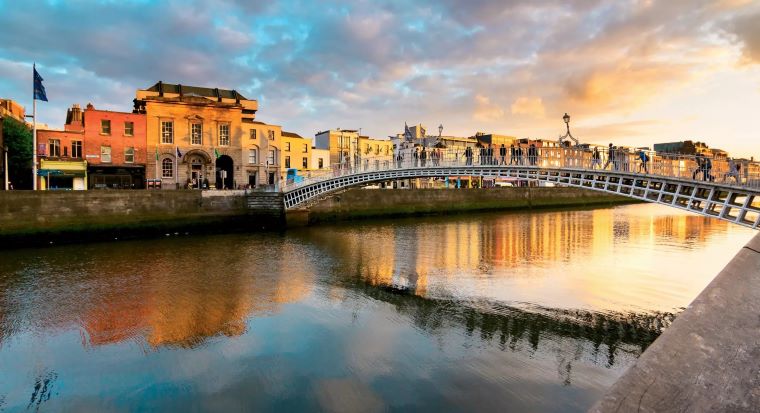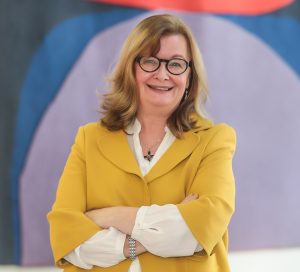
Brenda King works for Fáilte Ireland, the National Tourism Development Authority in Ireland. Recently we spoke with her about Eire’s capital city.
What are your own personal roots?
I was born and raised in Dublin city. However, my mother came from the West of Ireland and my father from the Midlands. We also have family connections in the Northeast of the country, so I grew up with a very good knowledge of the history and landscape of these areas.
When did you first get involved with Fáilte Ireland?
I started working for the Irish Tourist Board way back in the eighties. Ireland was very different then with a history of high emigration and recurring recessions. Tourism was a growing industry and offered a chance to travel and work with many interesting people. It’s been an inspiring journey to watch how tourism on this small island, situated beside the North Atlantic Ocean and on the fringe of north-western Europe, has become one of the biggest contributors to the Irish economy and can claim it’s place globally as a unique and beautiful place to visit.
What are your roles and responsibilities there?
I am part of Fáilte Ireland’s international publicity team who create press pitches and itineraries for all types of overseas media, ranging from television and radio crews to print journalists and online influencers. The work involves increasing the visibility and reputation of Ireland on as many significant global media platforms as possible. Each trip is carefully researched to match Ireland’s tourism product with the relevant overseas consumer audience and listenership. Itineraries are themed to reflect the key tourism experiences. All logistical planning for each trip involves liaising with the extensive Irish tourism network throughout the country and with partner agencies, Tourism Ireland, and Tourism Northern Ireland.

What are the challenges of the profession?
The changing face of the media landscape and consumer trends in a post pandemic world has had a great impact on how we now work. Traditional or legacy media is still important in many countries, however we have to adapt itineraries to suit all types of consumer reach and sometimes, for example, there are several media types represented on a group press trip covering a wide range of audiences and a broad listenership. Each trip is about the story, so offering a variety of experiences and interesting people for interview are important factors. Last minute changes involving travel or weather can impact on timings and appointments. While things may not always run smoothly, it’s very important to keep a press trip on track. A back up plan is essential and when it comes to Irish weather, which can be very unpredictable and you can experience four seasons in one day, I always suggest bringing factor 50 and wellies!
What are the rewards?
Obviously when a trip goes well and meets the expectations of the media, it’s a great relief for me personally and when I see the resulting imagery, content and storylines come to life, it’s amazing. People in the Irish tourism industry never let us down, they become part of the team working with us in Fáilte Ireland to help promote the island and their passion, enthusiasm and support is very rewarding. I feel that we make a difference to benefit the country and support everyone who works so hard here in Irish tourism.
Who are your “clients” and how do you reach them?
Our clients are all of those involved in Irish tourism and, of course, the overseas media themselves. We work very closely with Tourism Ireland, which is responsible for promoting Ireland abroad and generating overseas media interest in Ireland. Once overseas media arrive here, we focus on providing a high-quality experience and rewarding visit for them.
Why should people visit Dublin?
Dublin’s an amazing city to visit. I have first-hand experience of visitors telling me how much they enjoy the uniqueness that lies in its character and progressive attitude. It’s a small capital with a big heart, incredible architecture, beautiful green spaces, and parks. Visitors come from all over the world to experience its culture, music, and literary heritage. Situated beside the coast, it’s not far from the northside beaches of Malahide and Portmarnock which are ideal for water sports and have championship golf courses nearby. Also, the Dublin mountains on the southside are ideal for walking and hiking.
How has Dublin evolved as a city in recent years?
Dublin has changed a lot over the last two decades and will continue to evolve as we emerge into a post pandemic world. Great music, storytelling and an array of festivals have long been part of its scene, and these have returned to the city’s pubs and theatre venues. New hotels and restaurants have opened and are busy welcoming visitors. A number of the city’s urban neighbourhoods have become cool ‘hotspots’ like the Liberties, Portobello, Ranelagh, Phibsboro, and Stoneybatter. The Docklands area has changed significantly over the last twenty years, sometimes referred to as ‘Silicon Docks’ locally due to the large number of high-tech companies locating their European Headquarters there.
What are your own favourite spots there?
I have many, but here are the top five. Walking in the Phoenix Park, Europe’s largest walled park with its own wild herd of wandering fallow deer. Coffee in one of Stoneybatter’s dog friendly cafes. The village of Howth with its wonderful cliff walks. Lunch in a traditional Irish pub in Dalkey village. Visiting one of the Dublin’s many museums and galleries many of which are accessible for free.
www.failteireland.ie
www.discoverireland.ie
www.visitdublin.com




















Leave a Comment